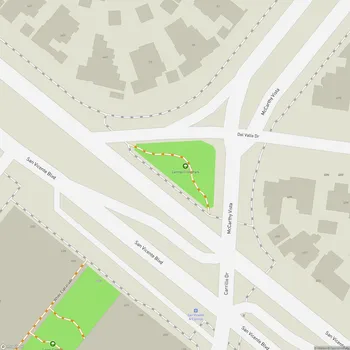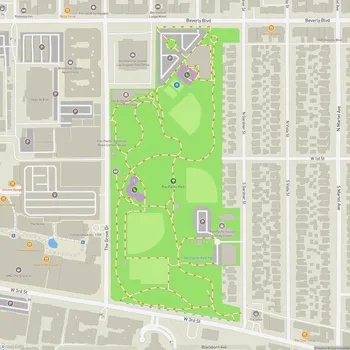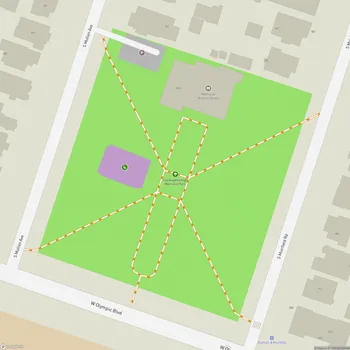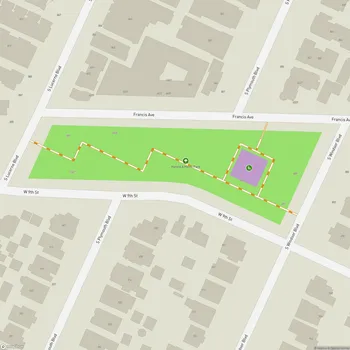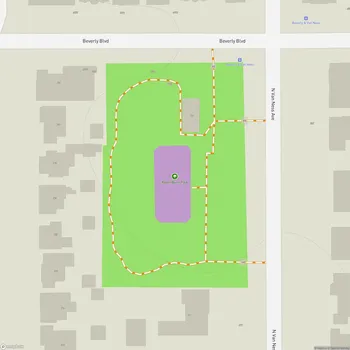Hancock Park
Hancock Park Map
About Hancock Park in Los Angeles
Hancock Park is a 23-acre urban park located in the Miracle Mile section of the Mid-Wilshire neighborhood in Los Angeles, California. The park was created in 1924 when George Allan Hancock donated the land to the County of Los Angeles with the stipulation that it be preserved and the fossils found there be properly exhibited.
The park is most famous for containing the La Brea Tar Pits, natural asphalt pits that have trapped and preserved fossils of Ice Age animals for tens of thousands of years. Adjacent to the tar pits is the George C. Page Museum of La Brea Discoveries, which displays fossils excavated from the pits, including mammoths, saber-toothed cats, dire wolves, and many other prehistoric species.
Hancock Park also encompasses part of the Los Angeles County Museum of Art (LACMA) complex, making it a major cultural destination in Los Angeles. The park features urban open spaces and landscaped areas for walking and picnicking. In 2014, the park's Observation Pit reopened after being closed since the mid-1990s, allowing visitors to view large Ice Age fossils.
The park includes a Pleistocene Garden that recreates the prehistoric landscape of the Los Angeles Basin from 10,000 to 40,000 years ago. This garden represents four ecoregions: Coastal sage scrub, Riparian, Deep Canyon California oak woodlands, and California montane chaparral. The plant list for this garden was created based on 35 years of research from fossil excavations in the area.
Hancock Park is registered as California Historical Landmark #170, and the La Brea Tar Pits within the park are designated as a U.S. National Natural Landmark, highlighting the site's scientific and historical significance.
